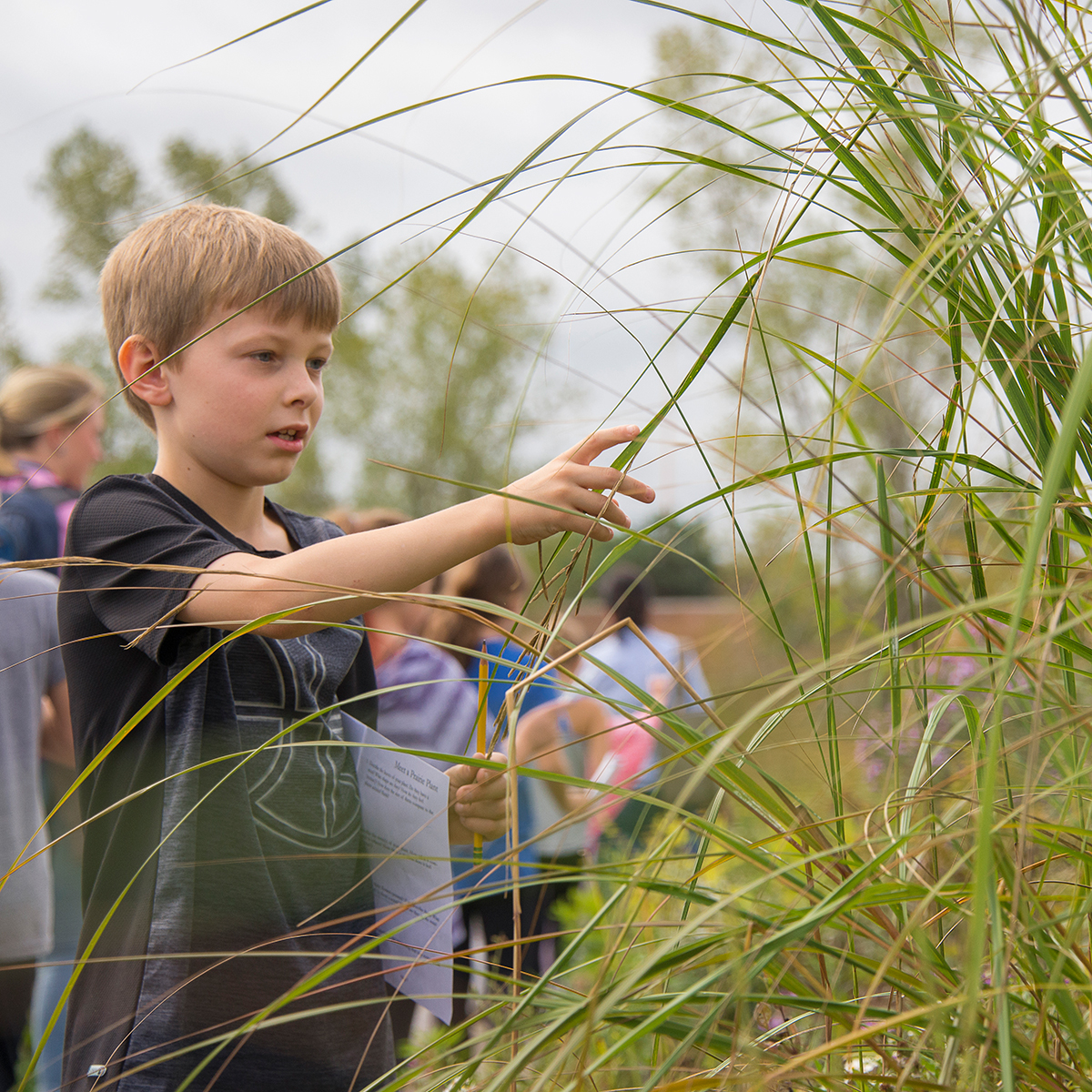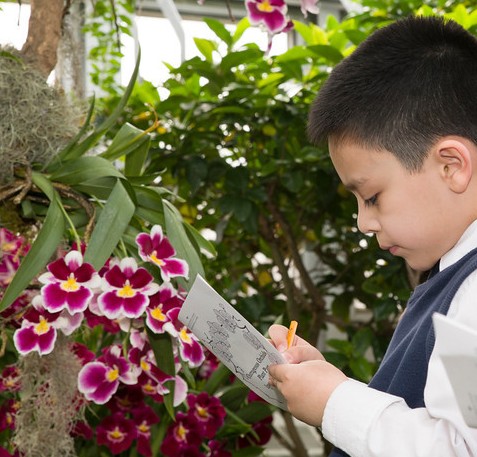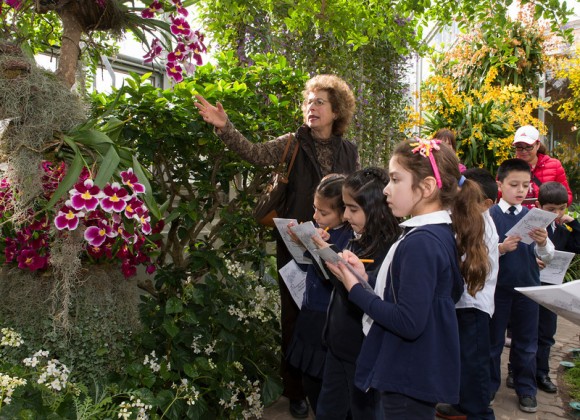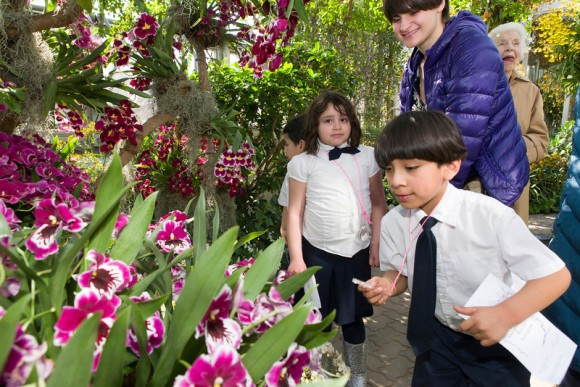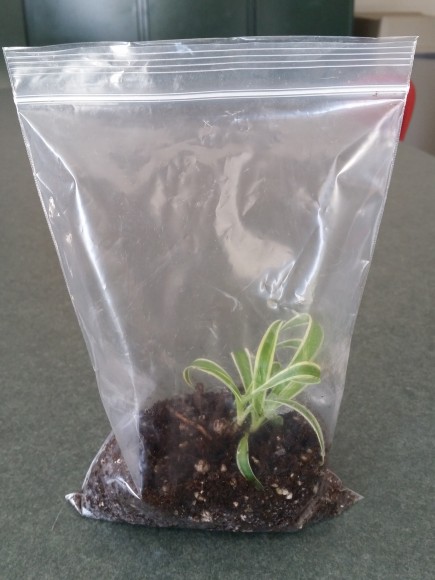Tiny hands, belonging to a class of third graders, carefully fold rulers into squares and rest them on a grassy meadow near the Dixon Prairie. Inside these 2-by-2-foot quadrants is a fantastical world to discover: the height of different species of plants, the temperature of the soil, the wind and the sun, and the climate of the lawn.
The children have a mission on this blustery October morning, an adventure in the far reaches of the Chicago Botanic Garden, where a yellow school bus opens its doors to a field trip inside the life of a Garden scientist.
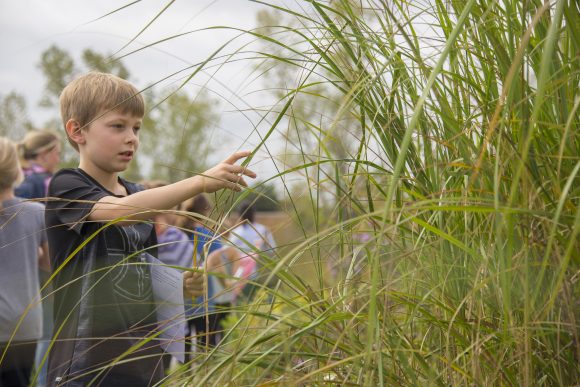
Prairie Pondering is just one of the Garden’s guided field trips, where students from Chicago area schools can experience the day-to-day work of a Garden ecologist. Trained Garden volunteers engage students in guided field trips from September to June. They use the same tools as horticultural scientists, take samples in the field, and ask questions that Garden experts examine on a daily basis. The goal of the field trips is to create real-life opportunities for students to have fun with science outside of their classroom walls, said Drew Wehrle, the Garden’s coordinator of student field trips.
To get their hands dirty, so to speak.
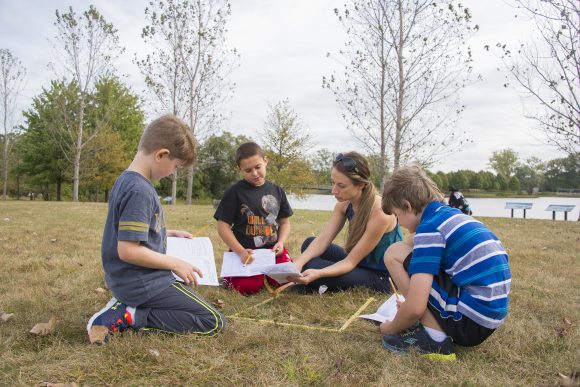
“What are the biotic—or living—things affecting the prairie?” asked a Garden volunteer during Prairie Pondering. Students scribble answers in their notebooks: sun, wind.
“What does the soil look and smell like?” More answers: dry, smells bad.
“What is the temperature of the soil? Why do you think it’s different from the temperature in the air?”
One girl watches her thermometer fluctuate from 77 to 76 degrees. “The temperature is changing!” And so begins an early, hard lesson about Chicago weather.
As the group moves on to the prairie, the children are asked to consider the many different plants they’ve found. One girl counts 100, another 200. One boy points out a milkweed plant that reminds him of the game Plants vs. Zombies: Garden Warfare.
“The point of the field trips is less about botanical expertise and more about asking the kids to consider why they think a plant looks or behaves the way it does,” Wehrle said.
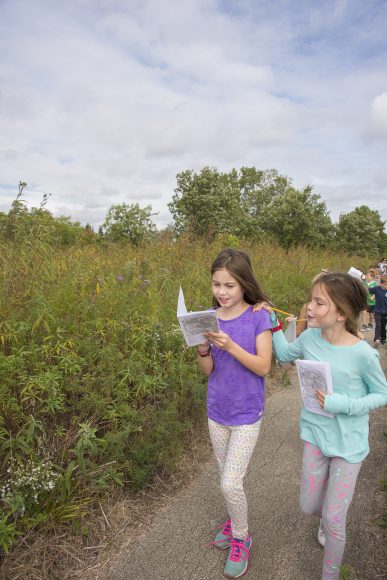
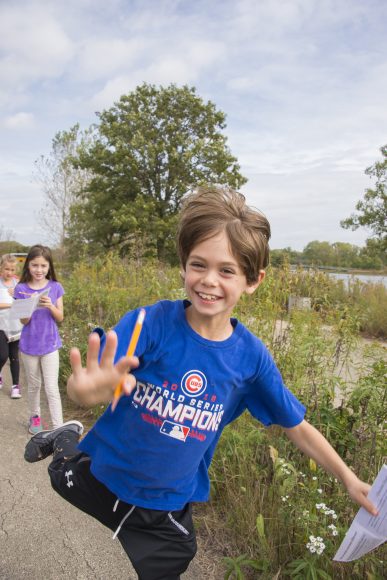
Each of the guided field trips is crafted to fulfill age-appropriate state Next Generation Science Standards (NGSS), so students get to explore while also engaging with ideas that complement what they’re already learning in the classroom. Guided field trips include a range of botanical and nature topics, including The Wonders of Worms and Soil, Lake Investigations, Water Bugs, and Tree Detectives. Field trips are offered for third grade through high school students, and can be guided or self-directed. Self-guided field trips allow groups of all ages to explore while their teachers direct them on independent activities.
For more information about field trips, or to sign up, visit www.chicagobotanic.org/fieldtrips.
©2017 Chicago Botanic Garden and my.chicagobotanic.org

